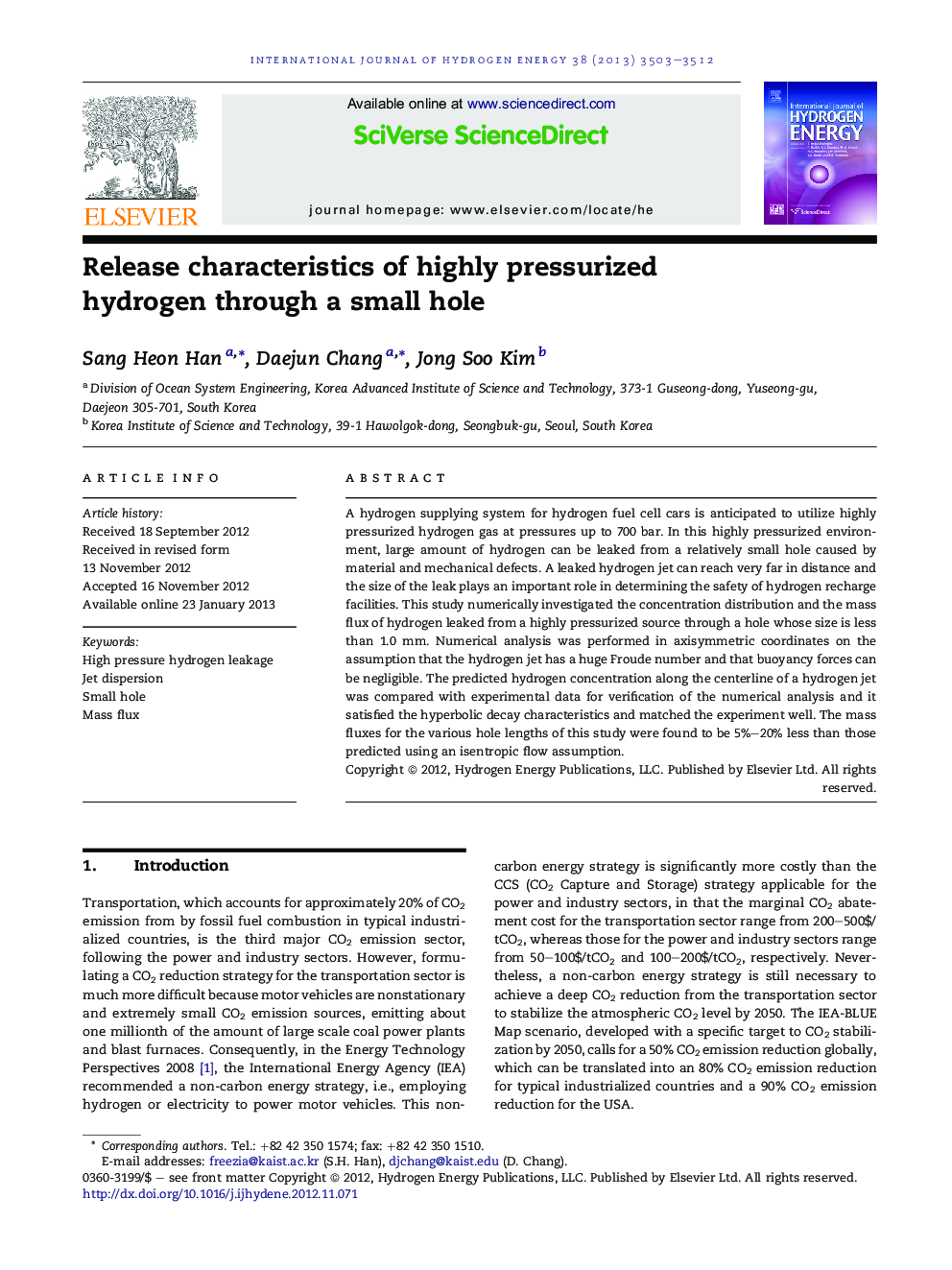| Article ID | Journal | Published Year | Pages | File Type |
|---|---|---|---|---|
| 1275767 | International Journal of Hydrogen Energy | 2013 | 10 Pages |
A hydrogen supplying system for hydrogen fuel cell cars is anticipated to utilize highly pressurized hydrogen gas at pressures up to 700 bar. In this highly pressurized environment, large amount of hydrogen can be leaked from a relatively small hole caused by material and mechanical defects. A leaked hydrogen jet can reach very far in distance and the size of the leak plays an important role in determining the safety of hydrogen recharge facilities. This study numerically investigated the concentration distribution and the mass flux of hydrogen leaked from a highly pressurized source through a hole whose size is less than 1.0 mm. Numerical analysis was performed in axisymmetric coordinates on the assumption that the hydrogen jet has a huge Froude number and that buoyancy forces can be negligible. The predicted hydrogen concentration along the centerline of a hydrogen jet was compared with experimental data for verification of the numerical analysis and it satisfied the hyperbolic decay characteristics and matched the experiment well. The mass fluxes for the various hole lengths of this study were found to be 5%–20% less than those predicted using an isentropic flow assumption.
► Simulation of highly pressurized hydrogen release through a small hole. ► Comparison between prediction and experiment. ► Investigation of hydrogen release accompanying viscous dissipation work. ► Suggestion of non-isentropic flow mass flux relation of released jet.
